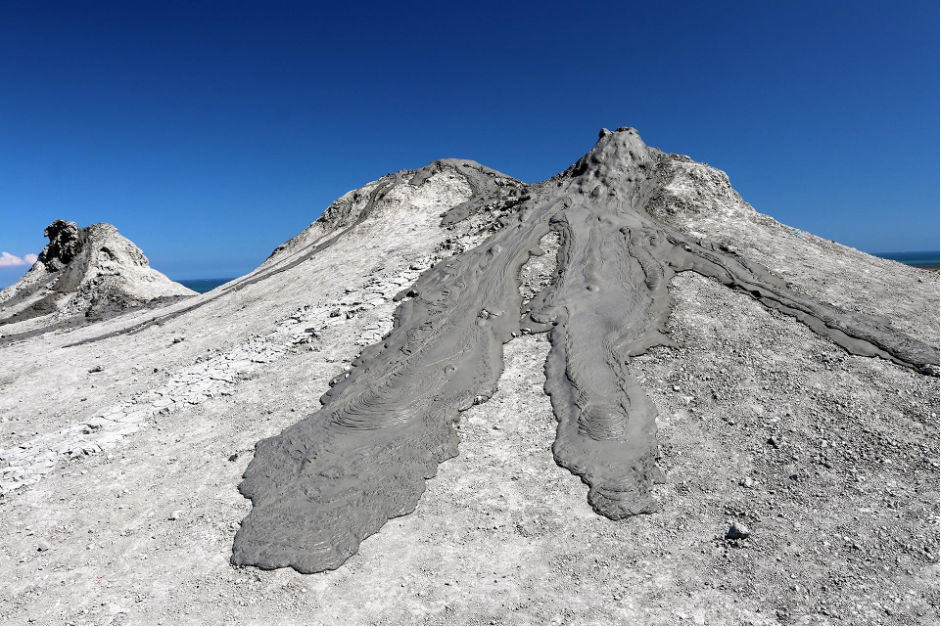Featured image: A mud volcano and mud flows in Azerbaijan. Credit: CAS/ Petr Brož/ CC BY-SA 4.0.
Paper: Mud flow levitation on Mars: Insights from laboratory simulations
Authors: Petr Brož et al.,
The Mariner spacecraft’s first images of Mars in the 1960s and 70s showed large volcanoes and flow features, most likely lava or mud. These features were largely interpreted to be lava flows because they look similar to those seen on Earth. However, a 2020 study by Brož et al., shows that mud flows may be more prevalent on Mars than first hypothesized.
The authors conducted lab experiments of mud flows in the Mars Chamber at the Open University, UK. The Mars Chamber operated in Mars’ atmospheric conditions of ~7 millibars (mbar) in comparison to Earth’s much thicker atmosphere around ~1000 mbar. Mud was then poured into the chamber over a sandy surface warmed to about room temperature. The surface was inclined to replicate the mud were flowing down the side of a mud volcano.

The results of the experiment showed that the mud levitated! Water in the mud boiled vigorously causing it to lift and levitate the mud as the gas bubbles escaped. Levitation helped to accelerate the movement of the mud across the surface, and the boiling mud contributed to erosion of the sandy material. The heat energy of the warmed surface at such low atmospheric pressures supported boiling, hence why previous studies into Martian mud flows using cold surfaces have not yielded the same results.
The boiling levitated and accelerated mud flow whilst also carving channels for the mud flow to follow. In this way, the experimental Martian mud flows formed features that look more similar to lava flows than mud flows. The majority of scientific observation of Mars uses cameras orbiting the planet. Using images so far away from the surface alone it would be hard to tell the difference between lava and mud flows.

Luckily, we do have ground-based observations of Mars. Mars Exploration Rover ‘Spirit’ landed near a lava flow field and was able to take pictures and chemically analyze basalt, a common volcanic rock proving that there are definitely lava flows on Mars. However, this study suggests that there is a chance that some of the features identified as lava flows from images alone, could be mud. Ultimately, care needs to be taken when interpreting flow features from images as it is an important distinction to make.
Mud flows are comprised of sedimentary material whereas lava flows were once molten rock. If some flow features have been categorized as lava when they could actually be mud that could have major repercussions for the geological history of Mars. Mud volcanoes are also a great environment for microbial life to thrive, there could have once been many more environments on Mars that were once suitable for the proliferation of life.
It’s LeviOsa, Not LevioSA: The Science Of Levitating Mud On Mars by Emma Harris is licensed under a Creative Commons Attribution-ShareAlike 4.0 International License.

